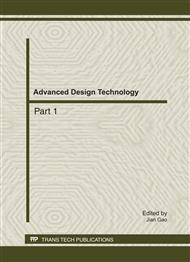p.1766
p.1773
p.1778
p.1782
p.1788
p.1792
p.1796
p.1802
p.1806
Impact of ECFA on Trend of Exchange Rate between NTD and RMB Based on Grey Prediction Model
Abstract:
Beginning from 2001 in which both Taiwan and China joined World Trade Organization (WTO), a large number of Taiwanese manufacturers have moved their plants across Taiwan Straight to China in search for cheaper labor force regardless of the political tensions between two countries. With the gradual easing of cross-strait political tension after the inauguration of pro-China president of Taiwan, the Taiwan Government starting from 2009 has been promoting the "Economic Cooperation Framework Agreement" (ECFA) through which the government claims the cross-strait economic and trade relations could be further enhanced and Taiwan could avoid being “marginalized” from the regional economic system. Additionally, as the two countries gradually lift restrictions on the investment and remove tariff barriers the cross-strait economic is bound to be more closely and the trade exchanges are set to skyrocket. However, since the bilateral trade or investment is generally through the U.S. dollar the fluctuation in currency exchange rate may serve as one of the important factors when the business makes the investment decision. Therefore, this paper applies Grey prediction method of Grey theory to the forecast of the exchange rate between NT dollar and RMB on which Taiwan enterprises could depend when formulating their investment strategies of investing more in China or Taiwan.
Info:
Periodical:
Pages:
1788-1791
Citation:
Online since:
August 2011
Authors:
Keywords:
Price:
Сopyright:
© 2011 Trans Tech Publications Ltd. All Rights Reserved
Share:
Citation:


